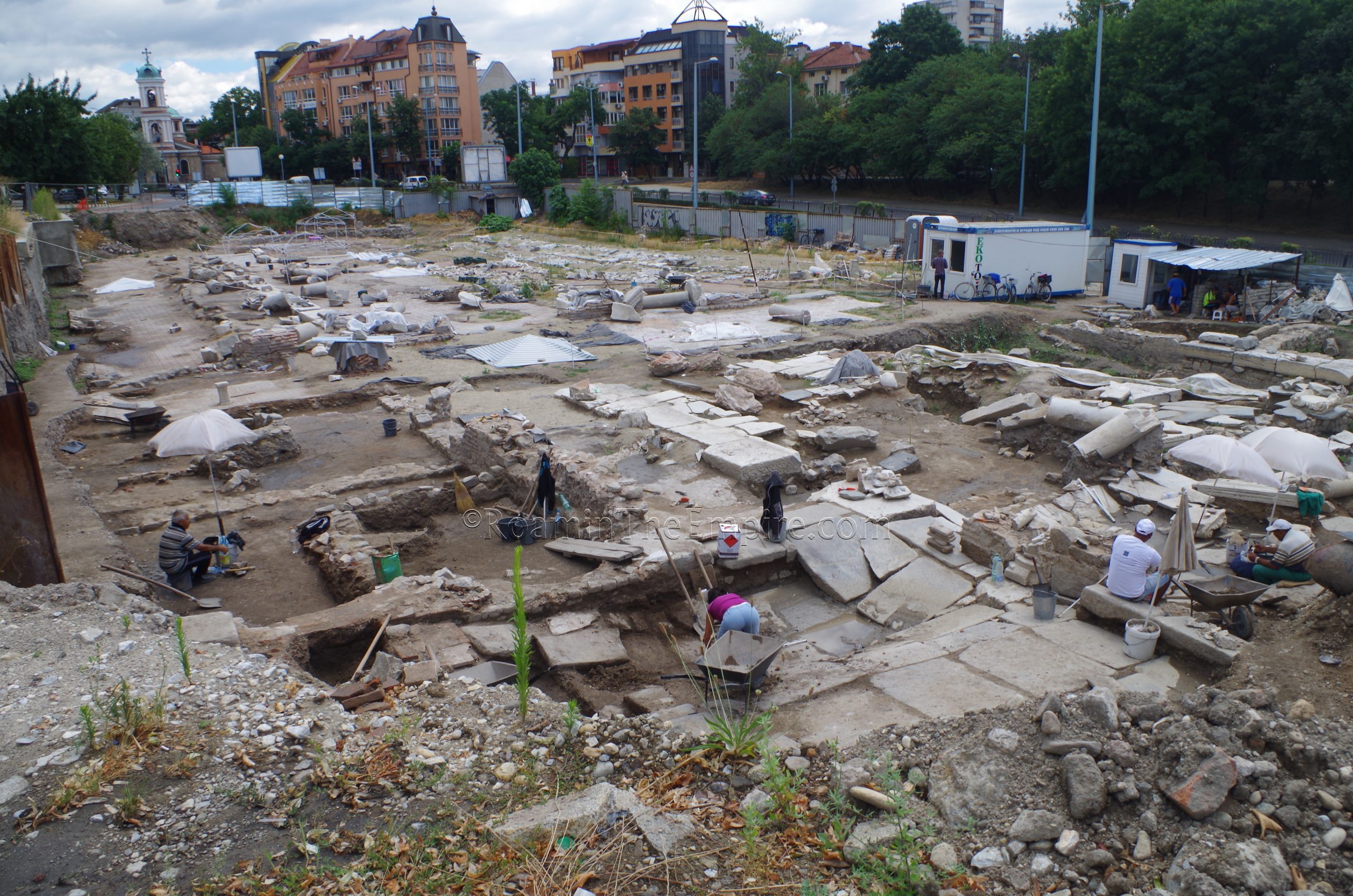
Continued from Philippopolis Part I
Not far to the northeast of the northern part of Philippopolis’ forum is the area of the Great Basilica or the Bishop’s Basilica. When I first visited in 2017, the area was exposed but inaccessible. It appeared to be in an active state of excavation and conservation. Many of the mosaics were visible from the street that ran along the north side of the site. In 2019, construction on the building had begun and almost none of the remains were visible. As of now, it seems construction on the building that will house the remains has not yet been finished, and so it cannot be visited.
The basilica may have originally been constructed as early as 313 CE, making it one of the earliest Christian churches in Bulgaria. It seems to have been constructed on a 1st century CE building of indeterminate use. By the 12th century CE, the basilica was abandoned and the area was used as a necropolis with a smaller on-site church.
About a block north is a large excavated area that seems to be largely neglected. There are coverings on most of the fencing that surrounds this plot, but there are a few points at which one can look in on the remains, which are fairly overgrown in most places. There’s some columns and what appears to be Roman brickwork, though it’s difficult to make out what exactly is here. Part of the interior circuit of Philippopolis’ walls cuts through the area, and the larger stones that make up this course of the walls are pretty recognizable among the otherwise indistinguishable and largely overgrown remains. I couldn’t find any information on what is here other than the city wall, as there is no information on site, and it’s pretty clearly not meant to be an attraction or point of interest for tourists.
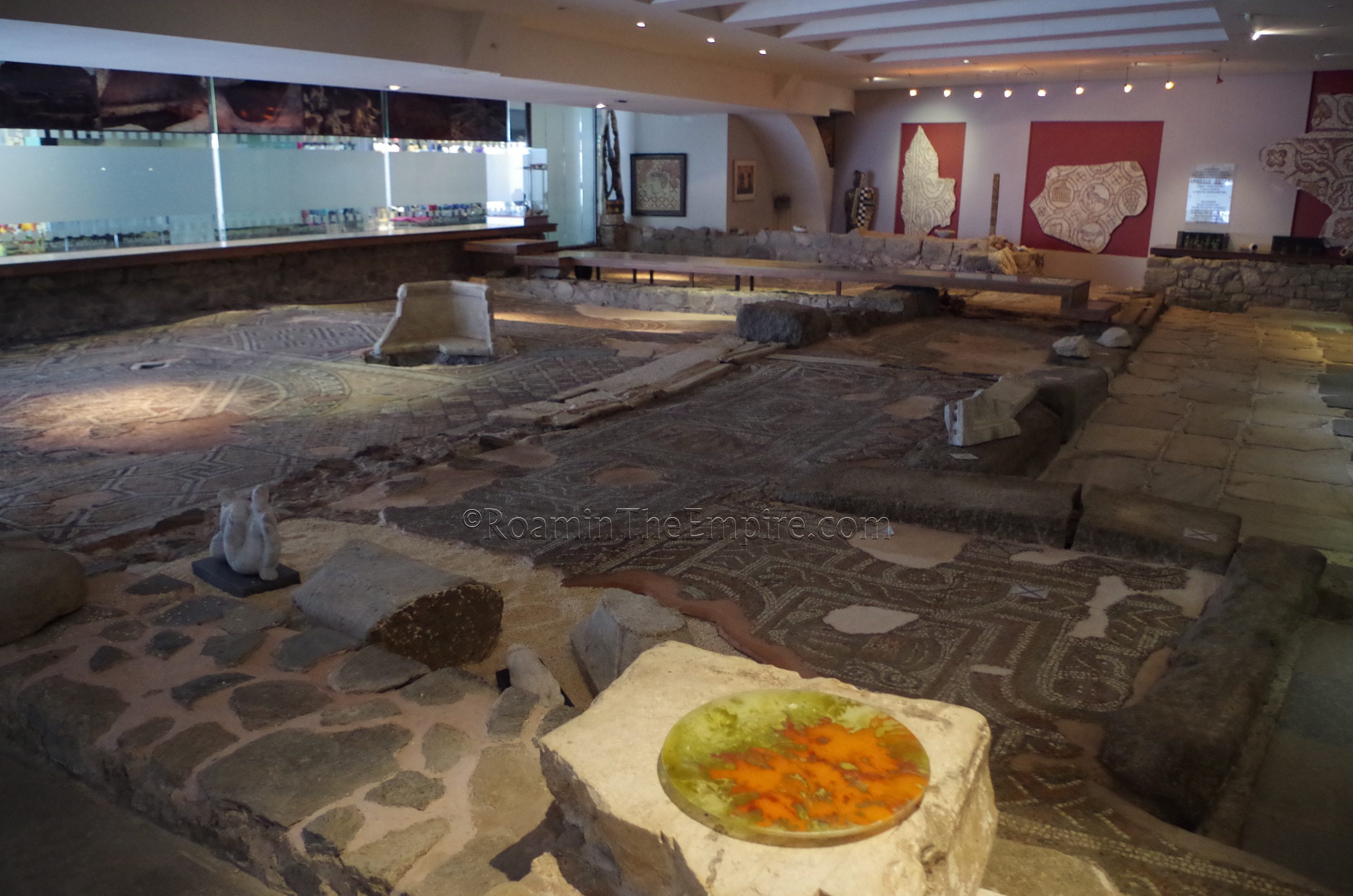
Cultural Center Trakart/Domus Eirene
At the southwest corner of this, as part of the underpass beneath Boulevard Tsar Boris III Obedinitel, is the Cultural Center Trakart, a privately run archaeological area and museum. The Cultural Center Trakart is open every day in the summer (April through October) from 10:00 to 19:00 and from 10:00 to 18:00 the rest of the year. Admission is 8 BGN, which is a combination ticket that also includes admission to the nearby Trakart Research Center museum.
The core of the remains here are a 2nd-3rd century CE residence, the Domus Eirene, located at the crossroads of two Roman roads. The peristyle house sports a number of in-situ mosaics. One of these mosaics has an image of a woman around which the Ancient Greek word EIPHNH, ‘peace,’ is inscribed. The other symbolic elements on the mosaic have led to this as being interpreted as a Christian message rather than a reference to the Greek goddess/personification of peace. The room also has the remains of a fountain as well as several other mosaics, mostly geometric in form. A few of the other rooms of the house also have mosaics of various stages of preservation.
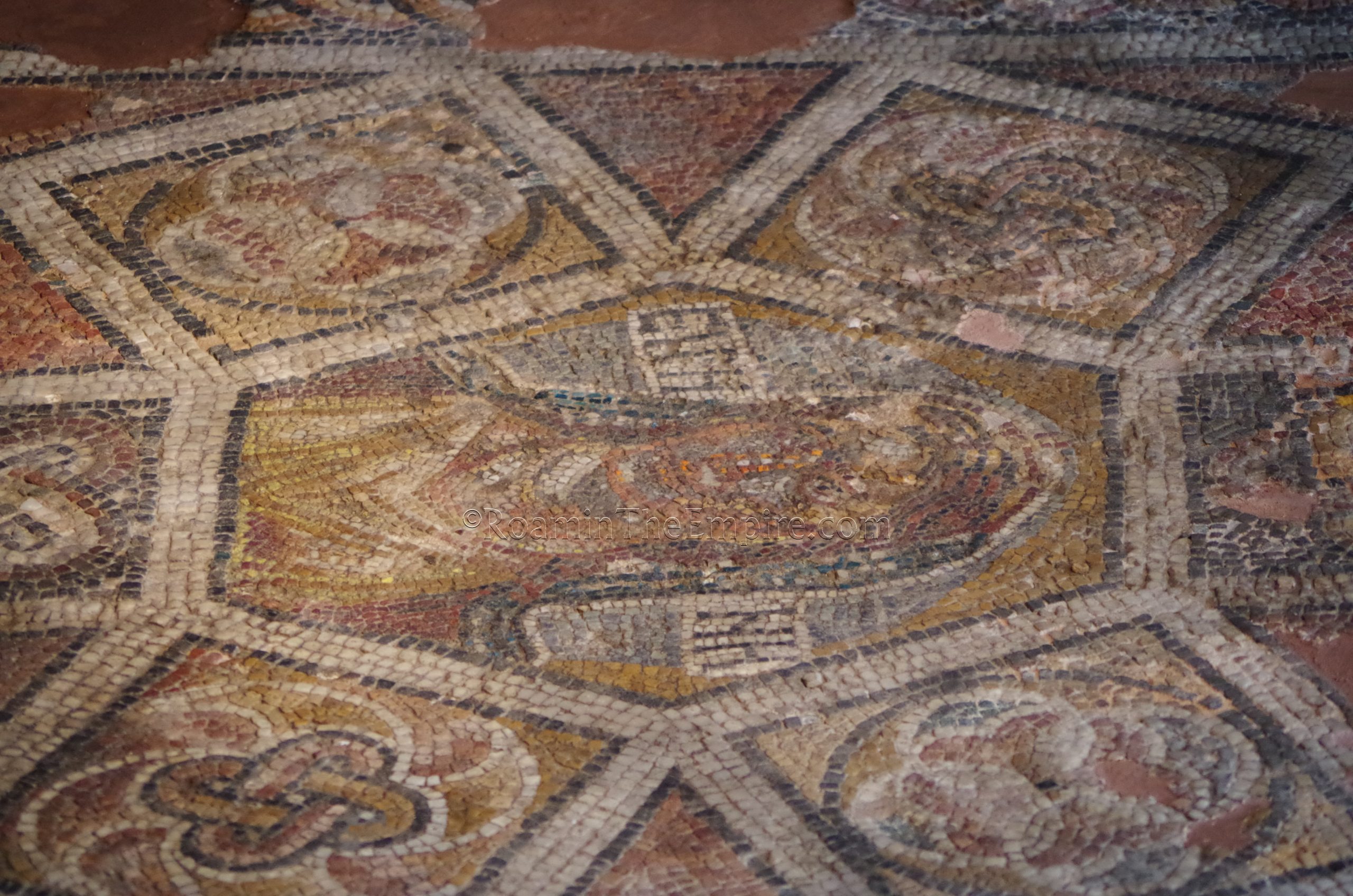
The mosaics displayed on the back wall of the museum are all reproductions from a residence in Ivailovgrad, in southeastern Bulgaria. The exception is the mosaic that continues from a floor mosaic up into the wall; in this case the remainder of the mosaic fell outside the museum and so it was removed and placed continuously up the wall. There’s also a small collection of some marble statue busts and a few other objects. An exhibition of glass objects is on display as well, though I can’t figure out if they are originals or modern reproductions, as the translation of their description is a bit ambiguous on that point.
It’s certainly a nice little stop, my one complain would be that the walkways are rather low to the ground level, and as such, the centerpiece EIPHNH mosaic is not very visible due to its location in the center of the room and the low height of the walkways. The unclear nature of some of the reproductions is a little unfortunate as well. An English information packet is provided, though, explaining the context of the remains and some of the objects in the collection, as well as some general information about Philippopolis.
Heading to the northwest a few minutes is the intersection of Angel Bukureshtliev Street/Doctor Georgi Valkovich Street and Boulevard Knyaz Alexander I, the main pedestrian thoroughfare through this part of Plovdiv. Though there are no actual remains visible here, there is the outlines of the carceres of Philippopolis’ circus outlined in the paving stones in white, marking the southern extent of the circus. It’s not readily apparent what these are when one is walking over them, there are no signs or information pointing them out. Even at the main stadium site, there’s only the vague allusion to the placement of this feature superimposed on a map, rather than any kind of indication of the delineations being there.
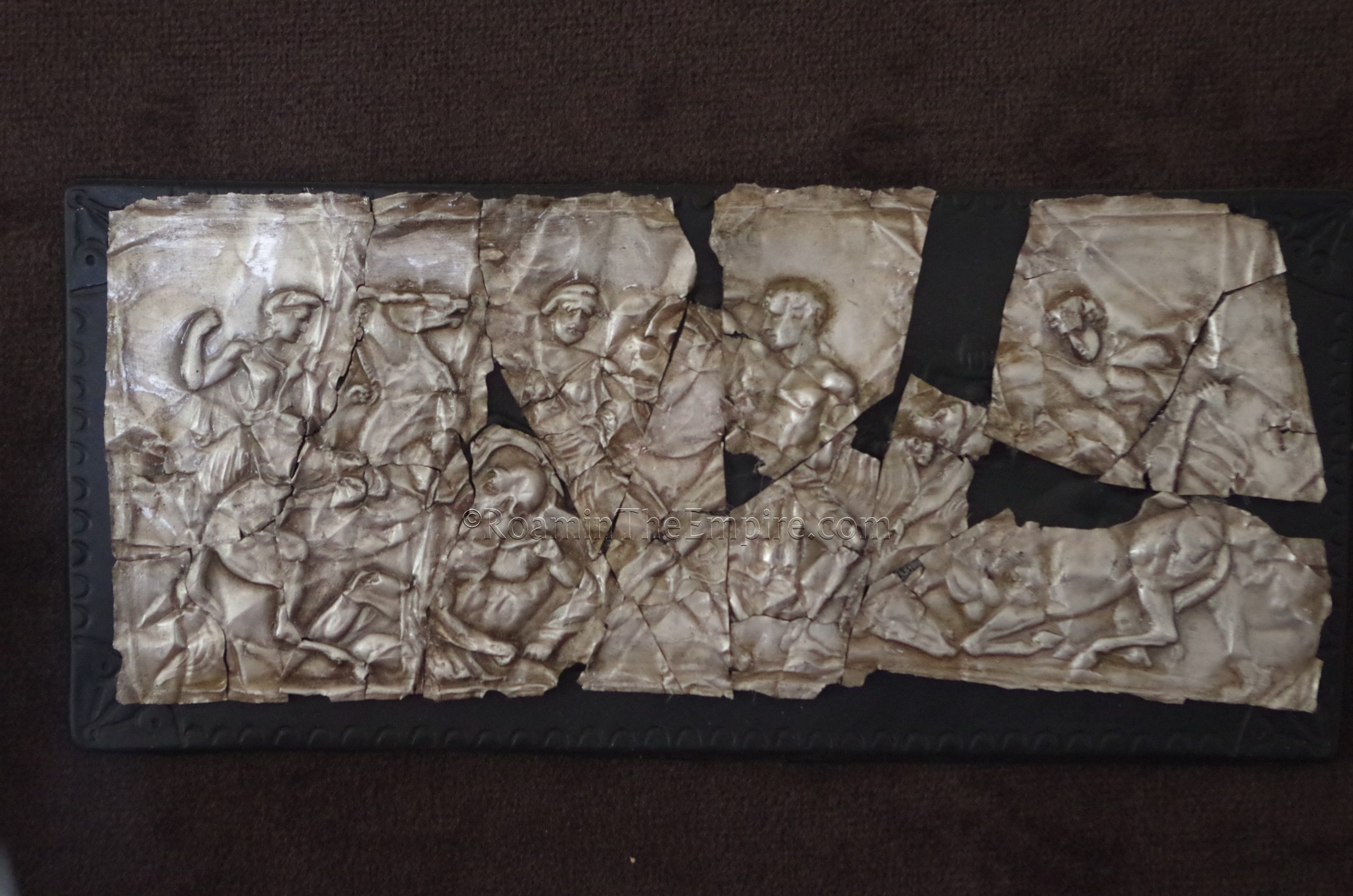
Less than 50 meters away, north up Boulevard Knyaz Alexander I, is the Trakart Research Center at Boulevard Knyaz Alexander I 25. The location is a bit unassuming, it’s just a door next to a clothing shop; there are a few signs, but it’s a bit confusing when it just looks like an apartment entrance. You have to use the buzzer on the door to request access as well. This museum doesn’t have any posted hours, but, it’s probably generally safe to assume they are the same as the other Trakart facility; from 10:00 to 19:00 in the summer (April through October) and from 10:00 to 18:00 the rest of the year. Admission is, again, 8 BGN for a combined admission of the two Trakart facilities.
The museum here is four levels with a variety of artifacts from the Neolithic through to more modern objects compiled from private collections. Most are Thracian in origin, though one of the levels was West African objects. Even the Thracian objects don’t necessarily seem to be local to Philippopolis. Some of the artifacts have the information that one would expect to find in a typical museum regarding identification, origin, and dating, but, a significant portion of the collection had little or none of the information at all. These were, I believe, part of the Vatevi Collection, which was largely bronzes and a few ceramics. Some of them were quite odd, and I was a little skeptical given the lack of information. It’s worth a stop, particularly if you’ve already bought or are planning on buying a ticket for the Cultural Center Trakart.
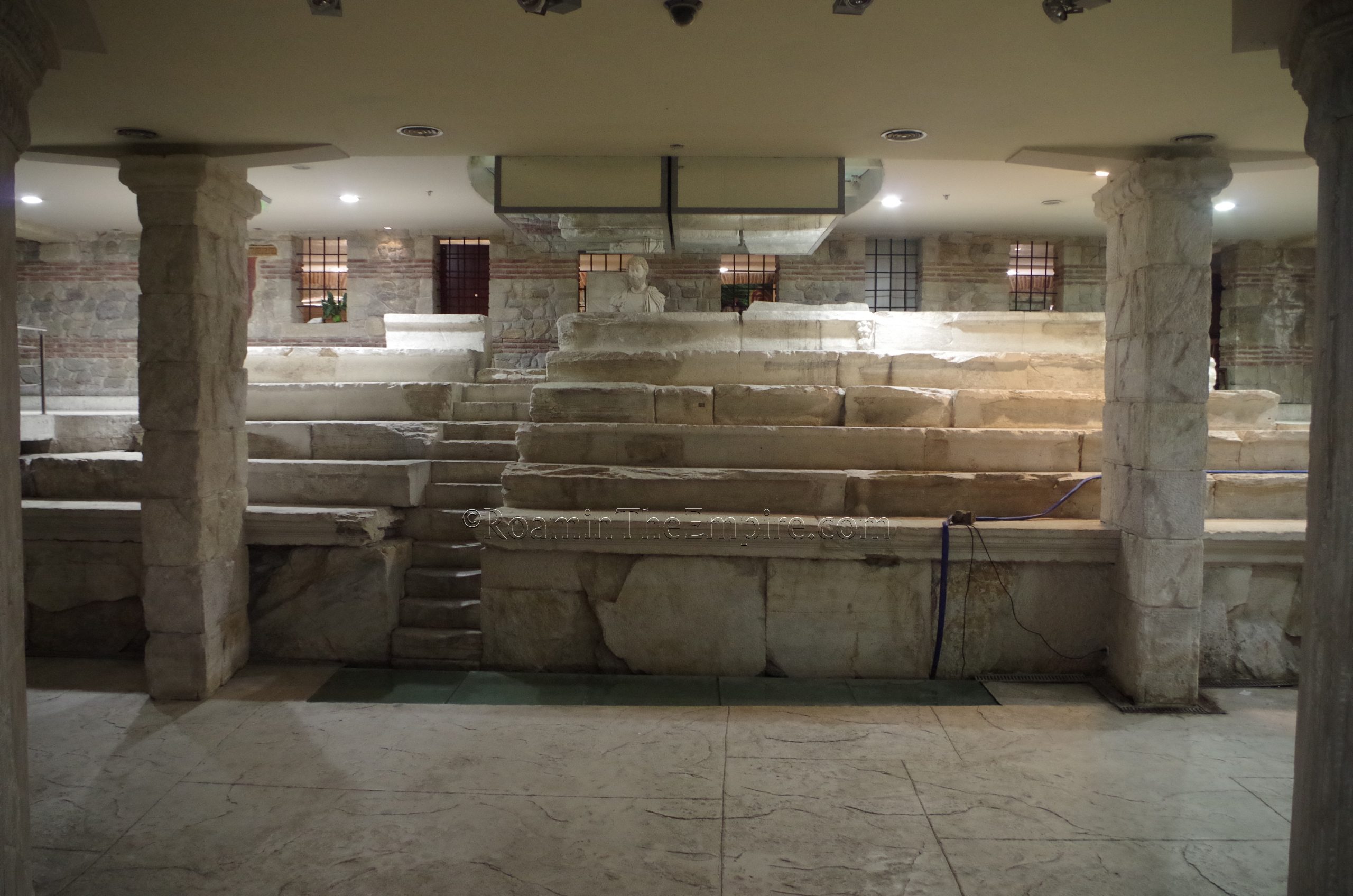
Circus
About 100 meters farther on up the road, at Boulevard Knyaz Alexander I is an H&M clothing store. There is a small information sign in front about the circus, and in the basement of the H&M is a small section of the eastern side of the cavea of the circus. Walking into the store, a set of escalators just inside leads down to a level at which the remains can be viewed without obstruction. Since it is inside the store, access is only available during store hours, daily from 10:00 to 20:00. There is no admission cost or any special permission needed. I just walked right in the store and went down the escalator to look.
Another 100 meters on up is the northern extent of the circus and the actual archaeological area, called the Ancient Stadium of Philippopolis. There’s a large open area in the plaza here that looks down onto the curved end cavea of the circus, and there is a stairway just off the square to the west that leads down. A bit further on to the north there is another entrance, which has more remains and contextual information, and so a generally better place to enter. There is no admission fee to the circus, and theoretically there are hours of operation, but I think those mainly apply to the gift shop and the interpretive movie center; the actual remains seem to be open all the time.
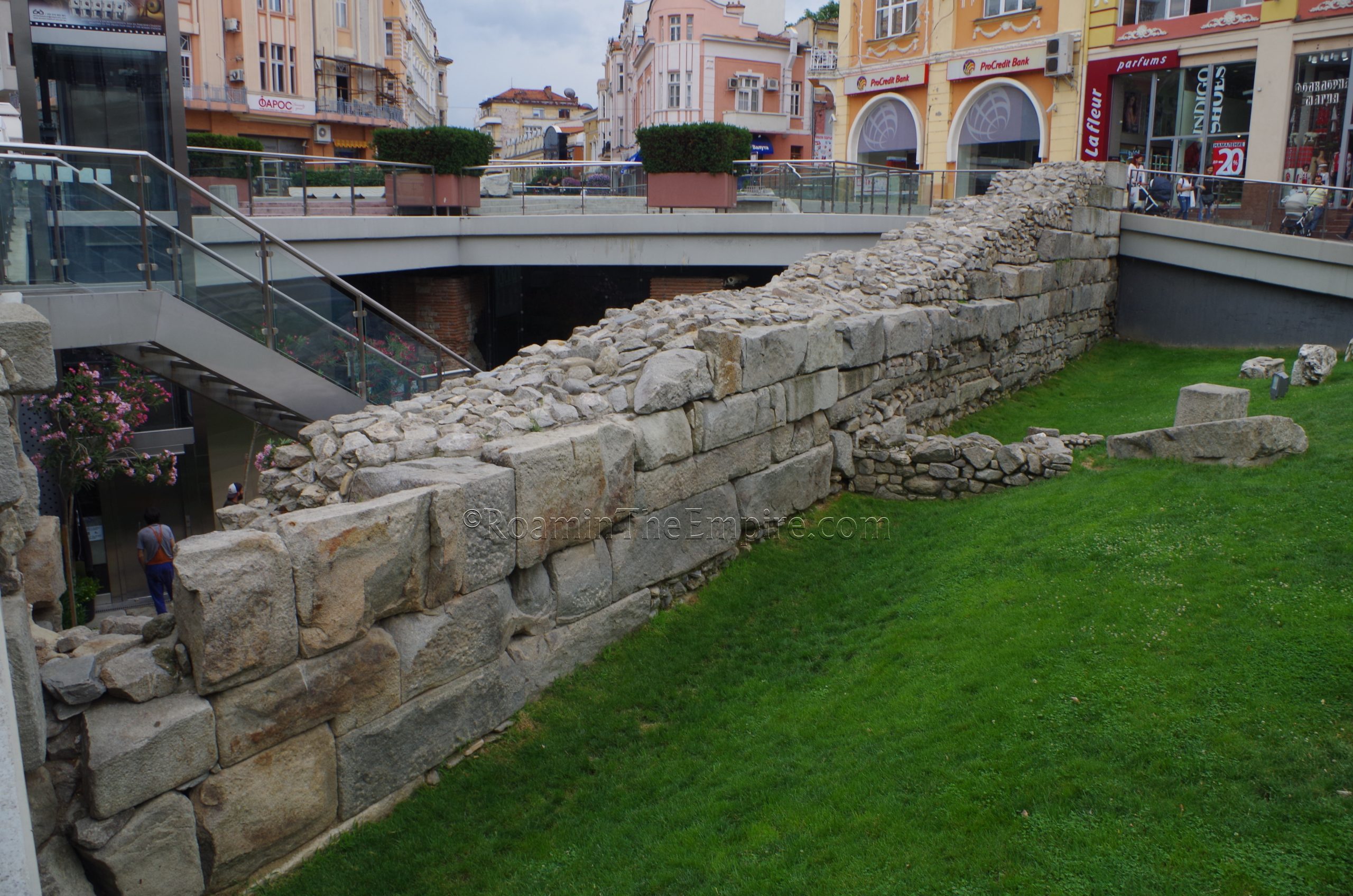
At the northern entrance, a stairwell descends to the level of the circus. Immediately to the right are the remains of the city walls constructed in 172 CE, during the reign of Marcus Aurelius. On the outside (north side) of the wall are some scant remains of pre-Roman constructions. Once down at the ancient ground level, there is a road that lead through to the porta triumphalis of the circus. Before reaching the circus constructions, the road passes beneath an aqueduct, of which a few pillars remain and are incorporated into the modern architecture of the gift shop and the plaza above the site. This aqueduct was constructed in the 4th century CE and was fed by a source 25 kilometers away in the Rodopi Mountains (Rhodope in antiquity) to the south. Some small drainage canals also criss cross near the amphitheater, but these are not really visible from the lower level, and are best seen looking down from the plaza. A few inscriptions are displayed around the entry area as well.
The circus was constructed during the reign of Hadrian. The shorter length of the track, only about 180 meters, the equivalence of one Greek stadion has mostly led to the general identification of the building as a stadium rather than a circus. The capacity was about 30,000 spectators. Epigraphic evidence suggests that games dedicated to Antinous were held here, as well as the Alexandrian Games established by Caracalla in 214 and the Kendrisian Games for Elagabalus’ visit to Philippopolis in 218 CE; dedicated also to the city’s patron deity, Apollo Kendrisos.
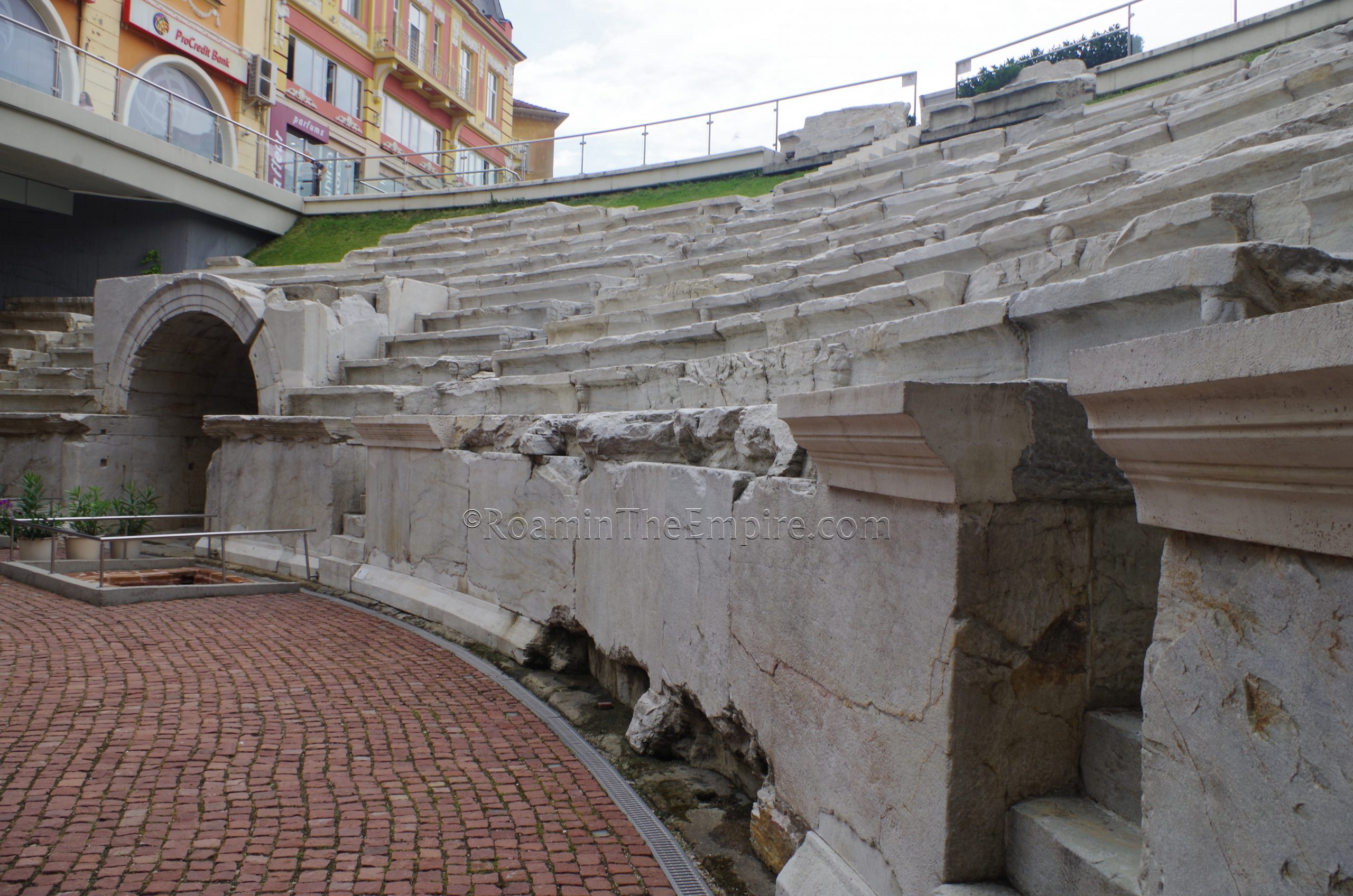
Up to fourteen rows of seating remain (some portions have more remaining than others) in this northern section of the circus, preserved and reconstructed, around the porta triumphalis. Some decorative elements can be seen adorning some of the seating areas. Pretty much all of the seating is open and able to be traversed. On either side of the porta triumphalis, the drainage elements are exposed. A few inscriptions and other lapidary elements are also displayed in this area. A 3D movie theater showing a film about ancient Philippopolis is located in the building to the south, with access at the circus level. There is admission to this, it costs 7.20 BGN. The schedule seems to be every 40 minutes from 10:00 to 17:00 with a break at midday. I opted not to see the movie, so I can’t really say anything about the quality, but I wasn’t especially eager to spend the time or money to find out.
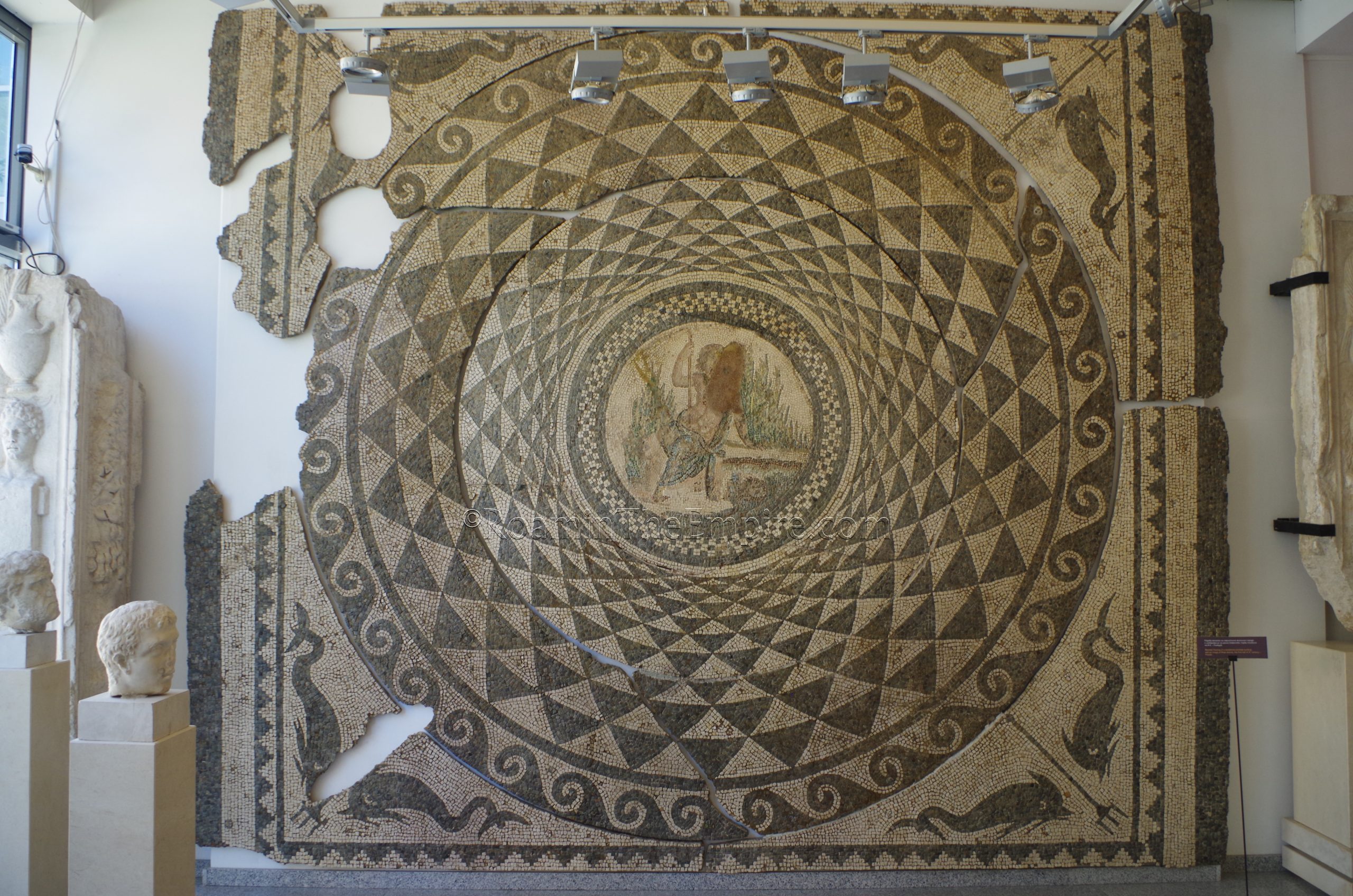
Regional Archaeological Museum
About a half a kilometer walk to the north, located at Saedinenie Square 1, is the Regional Archaeological Museum. In the summer (May to October) the museum is open Tuesday through Sunday from 10:00 to 18:00 and is closed on Sundays. The rest of the year, it is open Tuesday through Saturday from 9:30 to 17:00 with closure on both Sunday and Monday. Admission is 5 BGN.
When I visited the museum for the first time in 2017, there was a policy that prohibited photography of any kind. During a second visit in 2019, however, the policy seems to have been rescinded and non-professional photography is allowed. The museum collection is really nice and though it is not a huge collection, it has some really phenomenal pieces. One of the centerpieces of the collection is the Panagyurishte Gold Treasure, a set of gold vessels made in Asia Minor in the 3rd century BCE and found in Panagyurishte in 1949. The treasure is split up among this museum, the national history museum in Sofia, and the history museum of Panagyurishte.
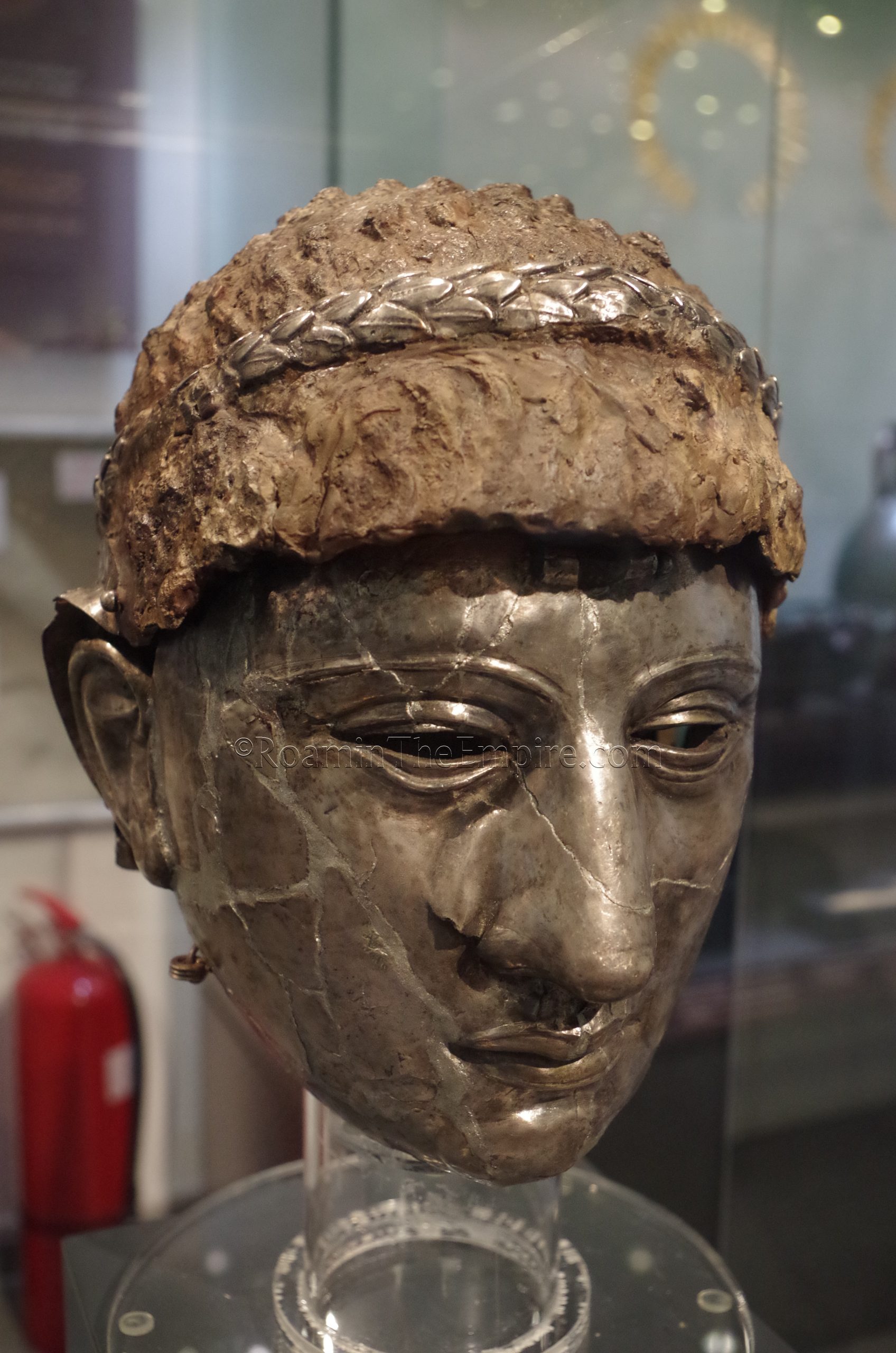
There are a few other Thracian era objects, as well as an interesting 1st century CE iron and silver mask excavated from the tomb of a Thracian aristocrat in Philippopolis that was stolen from the museum during an armed robbery in 1995 and recovered 20 years later. The main room has some inscriptions and reliefs as well as a few statuary pieces and some mosaics. Among the mosaics is a nice geometric mosaic with a central panel depicting a river deity. All told, it took me less than an hour to get through the museum. Most of the objects have information in Bulgarian and English, and there were a few general information signs as well. In the square in front of the museum there are a few inscriptions on display, unfortunately none of them have any associated information, though.
Continued in Philippopolis Part III
Sources:
Ammianus Marcellinus. Rerum Gestarum, 21.15, 26.10.4, 31.5.17.
Burrell, Barbara. Neokoroi: Greek Cities and Roman Emperors. Leiden: Brill, 2004.
Diodorus Siculus. Bibliotheca Historica, 16.71.2.
Livy. Ab Urbe Condita, 39.53.
Pliny the Elder. Historiae Naturalis, 4.18.
Ptolemy. Geographika, 3.11.
Tacitus. Annals, 3.38.
Topalilov, Ivo. (2014). An Aspect of the Political Propaganda in Philippopolis, Thrace, During II C. AD. In Studia Hungaro-Bulgarica III. Sumen-Szeged.
Valeva, Julia (ed.), Emil Nankov (ed.), and Denver Graninger (ed.). A Companion to Ancient Thrace. West Sussex: Wiley Blackwell, 2015.


